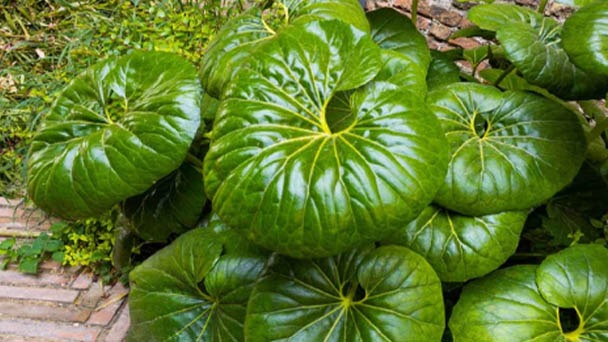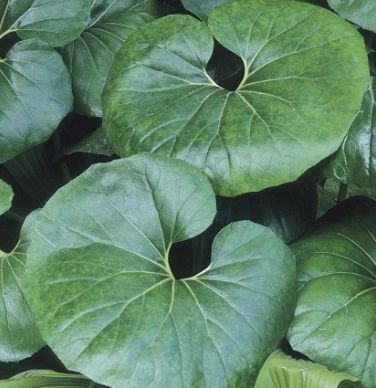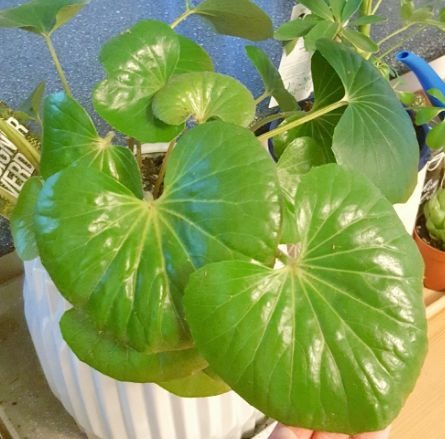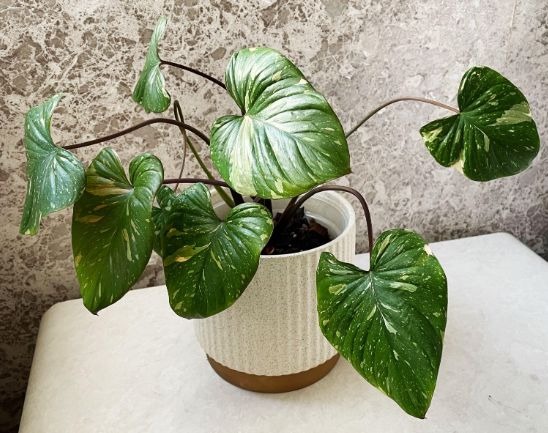Tractor Seat Plant Care: How to Grow & Propagate
Written by Ivy
Jan 10 2023

Leopard plants, also known as tractor seat plants, are currently popular indoor plants. Your house will become ablaze with the color of their enormous fan-shaped leaves and vivacious yellow leaves.
Do you desire to learn how to properly care for this strange plant at home? To learn some of the best and most basic care advice, just take a look at this guide we have put together.
What is Tractor Seat Plant-Leopard Plant?
The Tractor Seat Plant, also known as the Leopard Plant, is a rare plant that is indigenous to Taiwan, Korea, and Japan. It owes its popularity to its bright yellow flowers and large, lush-green leaves. We refer to them as tractor seat-like plants because of the unusual fan-like shape of their leaves.
Requirements for Growing Tractor Seat Plant

To grow this plant inside your home, pick a bright, shaded area either inside or outside. Below, you'll find a comprehensive list of all the information you need to take excellent care of your plant by adhering to the recommended conditions.
Sunlight
Prevent the plant from being exposed to direct afternoon light because it thrives in bright but indirect light. It won't mind spending a few hours soaking up some gentle morning sunlight. Keep it out of the total shade as that will reduce the size of the foliage.
Inside the house, the plant can also get sunburned. Most commonly, this occurs when people position it too near a window with a southern orientation. Either you should keep the plant far away from direct sunlight or cover such a window with thick curtains. This plant can thrive in any location in a room with a southern window.
On the other hand, windows that face east, west, or north are more secure. Near these windows, this plant will fare better. What about a space devoid of natural lighting? Similar to natural light, artificial grow lights promote the growth and flowering of your plant.
Soil
Humus-rich soil with a pH of neutral is preferred by the leopard plant. To get the best and largest leaves, grow the plant in a well-draining sandy or loamy soil. To increase water retention, you can add organic compost or leaf mold to the soil.
You need loamy soil that is rich in humus for this. Add a few tablespoons of perlite and a mixture of coarse-grade sand in equal parts. Round balls of perlite, a mineral, are common. You can also add a few handfuls of compost to the plant to increase its nutrient levels.
The right pot must be chosen in order to meet the plant's soil needs. The pot needs to be the perfect size—not too big or small—and preferably made of clay. Put a layer of gravel or filter paper underneath it before filling it with soil. This trick stops the clay and sand from washing away with the water and obstructing the drainage hole.
Water
The leopard plant is only picky about the moisture level. This plant, which is native to coastal regions, needs consistently moist soil to grow well. Never allow the soil to completely dry out because doing so would cause the plant's gorgeous foliage to wilt.
Always keep your spotted leopards in deep water. This entails pouring a lot of water slowly and steadily. While sparring the other plant parts, water only the soil. After that, pour the extra water that accumulated on the ground into a saucer, which you should then drain.
For the sake of your houseplants' health, we strongly advise that you only use distilled water. Hazardous minerals and chemicals are left behind by tap water in the leaves and soil. Tap water is inferior to even rainwater that has been collected. If your home doesn't have access to the filtered municipal water supply, that is.
Temperature & Humidity
USDA zones 7-9 are suitable for leopard plant hardiness. The plant wilts when exposed to extreme temperature changes because it does not like them. Move it indoors if you can, and guard it against frost.
Because of this, it is a fantastic plant to grow all year long outside. It is grown during this time in US hardiness zones 7 to 9. We can conclude that tractor seat plant cold tolerance is fairly high.
You might need to bring this potted plant inside during the winter if you live outside of these hardiness zones. Move the plant away from any drafts of cold air coming from inside the house.
Misting is the simplest way to increase humidity artificially. Using a spray bottle with a small nozzle, mist clean, filtered water. If you live in a dry area, you might need to mist up to twice a week.
A pebble tray or a humidifier are preferable if you forget to mist your plant. A pebble tray will increase humidity by 15 to 20 percent. You can keep the appropriate moisture levels at the same levels with the aid of a humidifier. The rising costs of using a humidifier are the only drawback.
Fertilizing
If the soil is rich in humus, the plant doesn't need any additional feeding. The growth will be boosted, though, by the occasional application of a balanced liquid fertilizer, diluted to half of its strength once every 6 to 8 weeks. Do NOT feed the plant in the dormant season during winters.
The leopard plant does not have the necessary fertilizing requirements. This is so that it can feel satisfied with the nutrition it receives because its soil is already composed of nutrient-rich hummus and loam.
You can fertilize sparingly with natural compost from March through October, when the plant is actively growing. The top three to four inches of soil should only be mixed with a small amount of compost once a month.
Mulching
To keep the soil around the plant's roots moist, it's crucial to mulch the plant. Apply a half to an inch of leaf mold or well-rotted organic manure around the crown to help plants retain moisture on dry days.
Pruning
Pruning is just as crucial as other maintenance requirements. When springtime first arrives, trick your branches' tips. They will grow more enthusiastically as a result of this.
Examine the leaves and stems more closely for any indications of injury or disease. These also need to be pruned. Don't forget to regularly clean and sterilize your pruning tools before using them to avoid any infestation.

Tractor Seat Plant Propagation Methods
Compared to most plants, tractor seed plants are easier to propagate. Let us explain how simple it is to propagate a houseplant if you are a novice and unsure whether you should. Only the timing must be accurate. Early to late spring is the ideal time to carry out this propagation.
Individual root clumps of this plant develop underground. These clumps are simple to separate into smaller groups and pot separately.
Water the soil well to make it soft before removing the plant. First, rake the top soil layers loose. The entire root ball can then be removed from the pot using a shovel. Next, gently wash the roots so you can see them clearly.
The clump of roots will be easily distinguishable from one another. Unknotting them by hand frequently works to separate them. Sometimes a knife is required to cut through entangled roots. As a general rule, avoid cutting up a root ball into too many tiny pieces. The bare minimum is two to four compact segments.
Pot each section in its own pot and take special care of it for the first two weeks. This tractor houseplant can be grown both inside and outside the home in rich, loamy soil. There needs to be enough hummus in your soil. Be sure to position it away from direct sunlight, though.
Problems of Tractor Seat Plants
There may not be many issues with tractor seat manufacturing. To be a serious plant caretaker, you must educate yourself on how to handle problems like pests, sunburn, and powdery mildew.
Slugs and Snails
When kept outdoors, your tractor houseplant is most vulnerable to snail and slug damage. The leaves and the nutrient-rich soil of your plant are what draw them in. Your plant is even more vulnerable to them if your garden has overgrown grass and moist soil.
Lay diatomaceous earth around the pot of the harmed plant for immediate assistance. Before scattering them on the soil's surface, take a few eggshells and crush them. This irritates snails and slugs. Purge the area around your pot at this time as well.
Slugs and snail infestations on a plant are unavoidable. They'll eat all the leaves, but they'll also weaken the plant from the inside out. These pests are large, so you can easily see them. In addition, you can recognize them by the slimy surface they leave on the soil and leaves.
Sunburn
This plant burns from the sun quickly and easily. Its leaf edges will begin to turn brown after just one to two hours in direct sunlight. When the air is dry and hot, this occurs more frequently. Additionally, it occurs more frequently in midday to midafternoon sun than in early morning or late evening sun.
Check to see if it is getting any sunlight any time you notice the leaves turning brown or papery. Place the plant in a more shaded area right away.
Of course, the sunburned areas won't turn green once more. The leaves that have been harmed the most can be removed. You can also prune a few of the leaves. The plant should ideally just be left alone while you wait for new leaves to emerge.
Powdery Mildew
Our advice to refrain from washing the plant is due to powdery mildew. The leaves will succumb to this fungus if they are consistently kept moist. The plant will develop a thick layer of white mold after a plethora of white spots start to spread throughout it and merge.
Mildew is a relatively harmless fungus infection. However, the leaves' mold layer prevents them from properly performing photosynthesis. Fewer new leaves are produced as the plant deteriorates.
You're in luck because mildew is simple to treat with simple household items. Use a cotton pad and two to three drops of neem oil to wipe the mold from the leaves. To completely eradicate this plant, prepare a foliar spray with neem oil and apply it once a week. To make this spray, mix one gallon of water with one teaspoon of oil.
Toxicity
Sadly, this plant is poisonous and toxic in all of its parts. If your curious pets chew on the plant stems and leaves, this could be dangerous.
Keep in mind to keep pets and children out of the reach of this plant. However, if an accidental ingestion does happen, contact your veterinarian or an emergency room doctor right away.

Conclusion
You have at last reached the finish line. Some of the most important ideas from this guide are listed below.
- You should provide some shade for this plant.
- Keep the temperature at least ten degrees higher.
- This plant can be multiplied from branch cuttings or seeds.
- Avoid washing this plant frequently because doing so can cause overwatering, which is bad for the plant.
- The plant is extremely poisonous to both humans and animals, so use caution if eating it.
You need to put this plant from Korea and Japan on your holiday wish list this year. They are easy to care for and very aesthetically pleasing in the home.
FAQs
Is Tractor Seat Plant Poisonous
Animals are poisoned by tractor seat plants. A hardy, time-tested houseplant that is ideal for low-light, dark areas of your home is the tractor seat plant.
How to Propagate Tractor Seat Plant
Grow tractor seat plants from seeds and by dividing the root ball because they tend to grow in clumps. If you're using seeds for propagation, plant them in organically rich, well-drained soil, and store them somewhere cool and dry. Use a spray bottle to mist it every day to keep the moisture level constant.
Latest Updated
- Benefits of Bugleweed - 7 Science-backed Health Benefits
- Bugleweed Dangers & Side Effects - Is It Poisonous?
- How to Plant Evergreen Trees - What You Should Know
- When to Plant Evergreens - Grow Guide for Evergreen Trees
- 12 Wonderful Evergreen Shrubs for Your Garden
- 12 Popular Evergreen Plants with Pictures for Beginners
- When And How To Prune A Lilac Bush Like a Pro
- How to Grow & Care for Lilac Vine (Hardenbergia Violacea)
- Japanese Lilac Tree (Syringa Reticulata) Care & Propagation Guide
- Shumard Oak Pros and Cons - What to Know
Popular Articles
- Winter maintenance of Antirrhinum Majus
- How to Grow Terminalia Mantaly Tree
- How to Grow and Care for Crossostephium Chinense
- How to grow Antirrhinum Majus in spring
- Peristeria Elata (Dove Orchid) Profile: Info & Care Guide
- Underwatered Snake Plant (Sansevieria Trifasciata) - Signs And How To Fix
- How to Care for Brazilian Jasmine Plant (Mandevilla Sanderi)
- How to Grow & Care for Graptopetalum Purple Delight in Summer
- Rosa Chinensis (China Rose): Plant Growing & Care Tips
- How to Care for Baby Sun Rose (Aptenia Cordifolia)